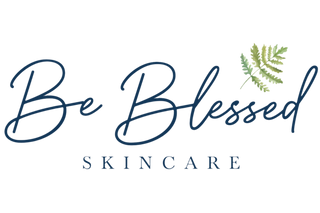Acne is a common skin condition that affects millions of people worldwide. It can manifest in various forms, and understanding the different types of acne lesions is crucial for effective treatment and prevention.
In this blog post, we will delve into the world of acne lesions, from the microscopic beginnings of a microcomedo to the more severe and noticeable cysts.
Let's explore these different types of acne lesions and what causes them.
Microcomedo:
At the root of all acne lesions lies the microcomedo, the smallest and earliest form of an acne impaction. Microcomedones are so tiny that they cannot be seen without a microscope.
These lesions occur when follicle walls are just beginning to stretch due to trapped sebum and dead skin cells. If a microcomedo continues to develop and ruptures, it can lead to inflammatory lesions. If it remains intact, it can progress into non-inflammatory lesions like open or closed comedones.
Best Skincare Treatment: Prevention is key for microcomedo. Look for skincare products containing mandelic acid or benzoyl peroxide, which can help keep pores clear and prevent microcomedo formation.
Gentle exfoliating cleansers and moisturizers are also beneficial in maintaining balanced skin.
Mandelic Cleanser and Turmeric Anti-Blemish Lotion
Closed Comedone:
As more dead skin cells become impacted in the follicle, the microcomedo enlarges into a closed comedone. These are characterized by their white or cream-colored appearance, often appearing as small bumps.
Closed comedones have a small opening at the top but remain largely closed, unable to expel the contents onto the surface. Several factors, including heredity, dehydration, and sebum build-up, contribute to their formation.
Best Skincare Treatment: Closed comedones can be managed with topical retinoids, which encourage cell turnover and help to open up the closed pore. Salicylic acid-based products can also be effective in removing debris from the follicle.
Revitalize A Lite and Beta C Toner
Open Comedone (Blackhead):
When a closed comedone continues to accumulate dead skin cells, the pressure within the follicle forces the opening to expand, exposing the contents to the surface air.
This oxidation process results in the characteristic brownish-black color, giving them the name "blackheads." The causes are similar to those of closed comedones, including heredity and sebum build-up.
Best Skincare Treatment: To tackle open comedones or blackheads, use salicylic acid or mandelic acid-based exfoliants to unclog pores.
Salicylic Serum and Mandelic Serum 5% .
You can also benefit from clay masks like Acne Mask to absorb excess oil.
Papule:
Papules are small, firm, reddish lesions that can be seen as an intermediate step between non-inflammatory and clearly inflammatory lesions. These mildly inflamed lesions are smaller than half a centimeter in diameter and often result from prolonged follicular congestion and the breaking down of the follicular wall.
When the follicle ruptures and white blood cells react to the invasion, inflammation occurs, leading to the formation of a papule.
Best Skincare Treatment: For papules, anti-inflammatory products containing ingredients like niacinamide can help soothe redness. A mild, non-comedogenic moisturizer and a gentle, hydrating cleanser are also essential to maintain skin health.
Mandelic Serum 5% and Balancing Cleanser
Pustule:
Pustules are small, round, inflammatory lesions that contain visible pus beneath the skin's surface. Unlike some other lesions, pustules are not usually abundant in bacteria.
They primarily result from chemical irritation due to sebum components such as free fatty acids. White blood cells clump together within 72 hours of the follicular break, forming pus, which may migrate to the surface.
Best Skincare Treatment: Pustules can be treated with benzoyl peroxide products. It's crucial to avoid picking or squeezing pustules to prevent scarring.
Nodule:
Nodules are deep, painful, and inflamed lesions that occur when a follicular break is deeper or when the impaction is driven deeper through picking.
These often result in softer, fluid-containing cysts and can last for several days or even weeks. The longer the inflammation persists, the more tissue damage and scarring may occur. Nodules are usually the result of picking the skin. Nodules are characterized by their inflamed bump larger than the end of your finger.
Best Skincare Treatment: Products with sulfur or benzoyl peroxide can help reduce inflammation. Keep the area clean and apply warm compresses to promote drainage, but avoid squeezing.
Acne Mask, Acne Wash, and Acne Gel 5%
Cyst:
Cysts are the most severe form of acne lesions, often requiring dermatologist referral for treatment. These closed lesions are usually covered with a sac or membrane and come with itching, swelling, and tenderness.
It is essential to manage cystic acne swiftly to prevent scarring. For more helpful information on Acne Scars click here.
These large, pus-filled lesions resemble boils and can be as big as the end of your little finger.
Best Skincare Treatment: Cystic acne is best addressed by a dermatologist, but you can help manage them by icing a couple of times a day and then leaving them alone to heal.
Acne can take on various forms, from the tiny, almost invisible microcomedo to the large and painful cyst.
Understanding the different types of acne lesions and their causes is essential for effective skincare and treatment strategies.
Consult with an acne specialist to develop a personalized plan to address your specific acne concerns and promote healthy, blemish-free skin.
We’d be more than happy to guide you on the path to clear skin through our free Virtual Consultation.

